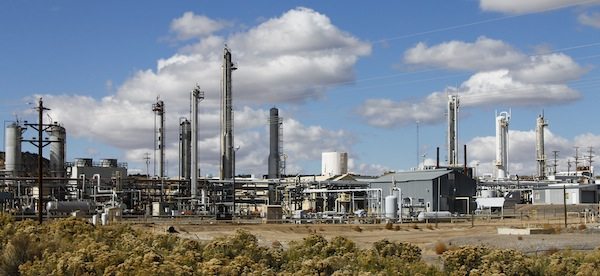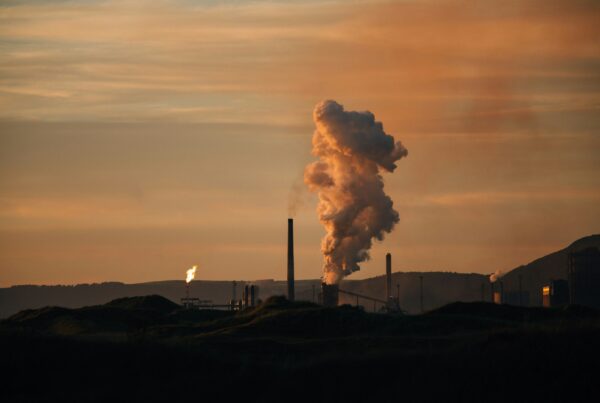What’s going on with the infamous Four Corners methane hotspot?
Over a hundred people joined us on October 28th to hear Jonathan Thompson, Journalist and Senior Editor for High Country News, deliver the Four Corner’s Methane Forum’s featured presentation. The forum was convened by the Sierra Club and we participated as a panelist following the presentation.
Thompson has been delving into this topic since last year when scientists from the University of Michigan, NASA’s Jet Propulsion Laboratory, Los Alamos National Laboratory and the California Institute of Technology identified a massive methane hotspot over the Four Corners. His deepest dive into the issue, “Unlocking the mystery of the Four Corners Methane Hotspot“, is a must read for anyone wanting to understand the issue.
Since then scientists have flocked to the region to study the sources of methane. The oil and gas industry is on the defensive, claiming the hotspot is solely a result of our geology, despite data suggesting otherwise. The initial report concluded: “The persistence of this CH4 signal from 2003 onward indicates that this source is likely from established gas, coal and coalbed methane mining and processing.”
The results of an extensive follow-up study, due next year, should put speculation to rest and provide data on which to base effective regulations. What we do know from EPA Greenhouse Gas Inventory data is that, as Thompson presented, ConocoPhillips oil and gas operations in the San Juan Basin is a top methane emitter in the nation.
Meanwhile, both the Environmental Protection Agency (EPA) and the Bureau of Land Management (BLM) are in the midst of rule-making to address emissions from oil and gas operations. BLM’s proposed methane waste rule applies to venting and flaring of oil and gas facilities on public land.
Many existing individual natural gas wells were designed to vent methane and the processing and marketing of the gas results in leaks of methane to the atmosphere. It is imperative that rule-making for methane waste from oil and gas operations on public lands apply to new and existing facilities.
Due to the magnitude of the methane problem on public lands, former BLM leaders wrote the Federal Office of Management and Budget on October 19, 2015 pleading for a rigorous rule in reducing methane waste. They stated the BLM should end the practice of venting of associated gas from oil wells, significantly cut flaring, and require leak detection at all oil and gas facilities on federal and tribal lands.
Additionally, they said the BLM should “require other best management practices and technologies at oil and gas operations, drawing on the experience of leading states and companies. These practices should reduce waste at all points of production, including at pneumatic controllers, liquids unloading and storage tanks.” The former BLM leaders point to a recent report by ICF International finding that methane waste from oil and gas operations on public lands in 2013 was worth nearly $330 million.
Meanwhile, current BLM decision-making in the Four Corners region continues to ignore the role of oil and gas in our methane problem. It seems that BLM officials lack the integrity and leadership that the former BLM officials now display.
Despite flaring problems with new oil wells and development in the Lybrook, New Mexico area and venting of methane at wells throughout the region, BLM refuses to put the brakes on new oil and gas development that’s occurring without an applicable Resource Management Plan. In addition, BLM continues to try to lease new areas for oil and gas, including parcels in Santa Fe National Forest near Cuba, ignoring air quality impacts (including methane).
We are thankful for the integrity of journalists like Jonathan Thompson whose in-depth research and robust presentations lead to thoughtful discussions and empower us to take action toward meaningful solutions. The Alliance is and always has been committed to developing science-based solutions to our greatest environmental challenges. There are solutions to this issue, we just need to demand them from agencies and industry. We’ll keep you informed, so you can help us do just that.



